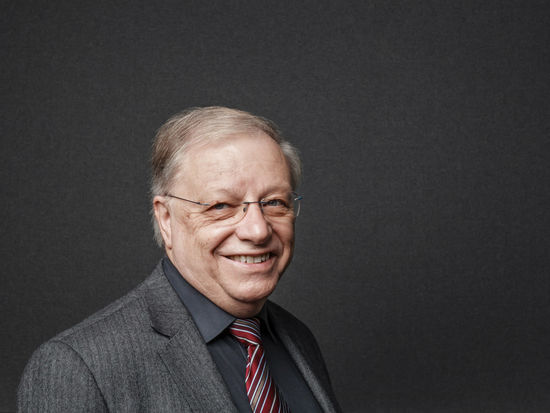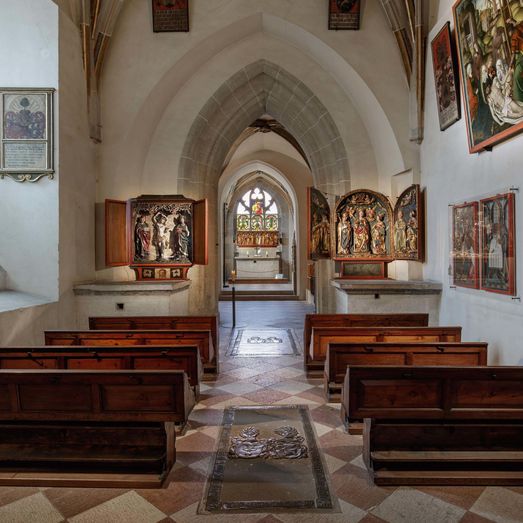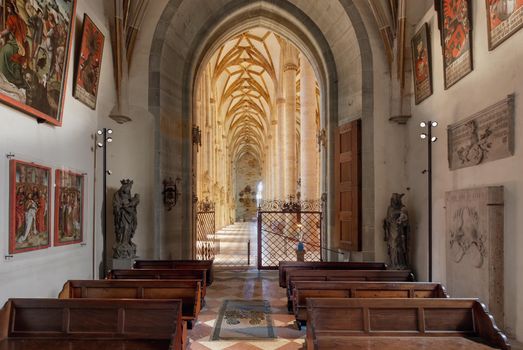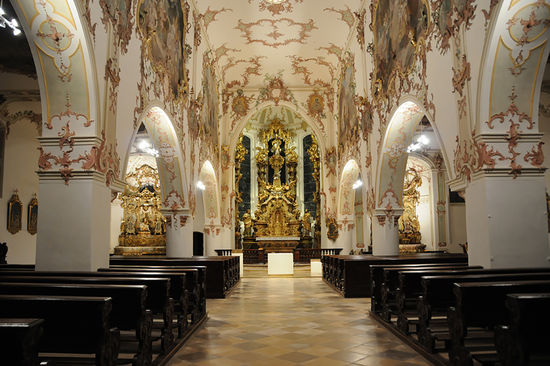- Stories,
- People
Ingenieure Bamberger
The lighting design for Ulm Minster was awarded first prize at the international Lighting Design Awards in London and the German Lighting Design Award.
– When Bamberger Ingenieure from Pfünz in Bavaria design the lighting for famous churches, museums, universities, and public spaces in Germany and Europe, they regard light as an integral part of the architecture, applying light to create the appropriate atmosphere for the people using the space. Buschfeld supports this view and is a long-standing partner of such projects. Read our interview with Walter Bamberger.

How did you get to know Buschfeld?
It was back at the World Light Show in Hanover. I can remember it to this day: it was Professor Hans Buschfeld’s first stand at a fair. The stand design was based on black. Hans Buschfeld was dressed in black. I was as well. And we got talking. Since then I have worked with Buschfeld a lot.
Can you name a few of the projects you have worked on together?
A lot of them are historical buildings: Ulm Minster, Augsburg Cathedral. The monastery museum in Heidenheim. Cologne Cathedral. It is often about providing tailor-made and rather sophisticated lighting solutions. Our studio works on a wide range of projects. We always look for the right partner for a project. It depends on the task at hand.


What would be typical project requirements that would inspire you to get Buschfeld on board?
Basically, we are looking to create very discreet, flexible and unique lighting solutions in museums and churches, for instance. One good example is the baroque imperial hall in Ebrach Abbey. For that project we designed and installed wheel chandeliers together with Buschfeld. And we also applied a cus-tomised solution for Cologne Cathedral. The luminaires in the nave and the transept required retrofitting with LEDs. Buschfeld undertook this task and retrofitted the existing luminaires using very high-quality LED light sources (from Soraa.) In Ulm Minster we worked with Buschfeld to design a special construction made up of columns for the chapels. Buschfeld have a profile into which track is incorporated at an angle of 120 degrees. Into this profile we managed to integrate three control and dimming channels that can all be operated independently. This enabled us to illuminate the altars, the floors and the architectural backdrop and to design different light scenes. So a lot of your work concerns historical buildings.
What are the challenges that have to be resolved in such projects?
In order to provide a good lighting design it is important to know and understand the history of the respective building: I often delve into the archives to find out as much as I can. Every building has its own social, spiritual and cultural identity that dates back to the time of its origin. For example, Freising Cathedral dates back to the 12th century. In the course of renovation work in the 18th century it was turned into a baroque church. So today everyone thinks it is a baroque church. But that is not correct. The building underwent change over the centuries. Which gives rise to the questions: Why? What was the reason? – Only when I have understood what happened can I begin to give thought to what lighting would be appropriate inside the space.
Once I have understood the history and architecture of a building, I can start to think about how the room must feel with light.
So it is content that determines the nature and scale of the lighting you design and implement...
We have to remember: we may not be as special as we think we are! In this respect, if I am about to work on a historical building, I need to pursue a dialogue with the inventor of the building, the architect, who unfortunately cannot be present in person. Then you have to make sure you are clear about what people thought back then. To be able to develop an appropriate lighting concept I consider it essential to be aware of such things. When I design the lighting for a new building I first talk to the architect about why the structure looks like it does. – You have to talk about it to be able to understand. – That is where we come into play. Given the technical functionalities that are available in the 21st century, we have a number of options: we could opt to underscore the architectural concept as a whole, for example, and enable it to make its own clear statement. Or we might decide to use light to accentuate specific architectural, historical or cur-rent aspects of the building, to create a setting for it, to render it visible. Or to create a special atmosphere.
Sounds like a lot of lighting equipment... Our work is not about making archi-tecture out of luminaires. We make architecture using light. If we get it right, then it is an attempt to translate the time of origin of a building into the present day! If you manage to do this very well and switch the light off in the building, then you should be able to experience the space without unders-tanding its function.
On your website you have listed six statements to show what you understand by architectural lighting design. One of them claims: Light is a statement and carries a message. What do you mean by that?
Documenting space and time! – Light is an extremely powerful element that always requires context and colour. To put it in simple terms: we only have a space when we have these three ele-ments. If I have a context, texture – that is to say room surfaces with a certain finish – and colour, but no light, then it is dark. You don’t see anything. There is no space there to experience.

Given the state-of-the-art technology available today it is possible to supplement daylight to the second using artificial lighting.
Sure. You can carry a case full of “tools” around with you and realise a lot of good things. But digital lighting technology can lead to all kinds of nonsense.
For example...?
The problem today is that many lighting manufacturers offer the latest in controllability and functions, but they are reluctant when it comes to developing a new system that uses this technology. The result is a confusing mass of technology and products and increased complexity. And the products are frequently incompatible with one a nother.
What do you regard as being important for lighting in future?
Simplicity. – That is what I appreciate about Buschfeld by the way: Buschfeld is all about track. You can’t get more minimalist or discreet than that. Buschfeld develop their products with care. Without launching umpteen new products on the market. And they pay great attention to ensuring their products are technologically absolutely up-to-date. Digitalisation and control technology can be easily integrated into minimalist Buschfeld systems that feature minimalist forms and dimensions. Based on the motto: I have a number of luminaires that I am installing in various manifestations and now I need to render them all smart enough so that every single luminaire can be addressed and controlled separately. Buschfeld remain true to their corporate policy – abiding by their original design beliefs for decades and developing their products accordingly. For me, that is technological progress at its best.
You have been collaborating with Buschfeld on a regular basis for decades. Why is that?
The scale of minimalism that Buschfeld offers, as I have just described, provides us with a kind of building kit. A great tool that enables us to meet our high standards in a creative and proactive way. As a rule, our projects demand new approaches and ideas. Every time we call Buschfeld we have a whole set of new tasks we need to resolve and Buschfeld is open and flexible enough to be able to delve deeply into these projects and help find the answers.
Interview: K. Spohr